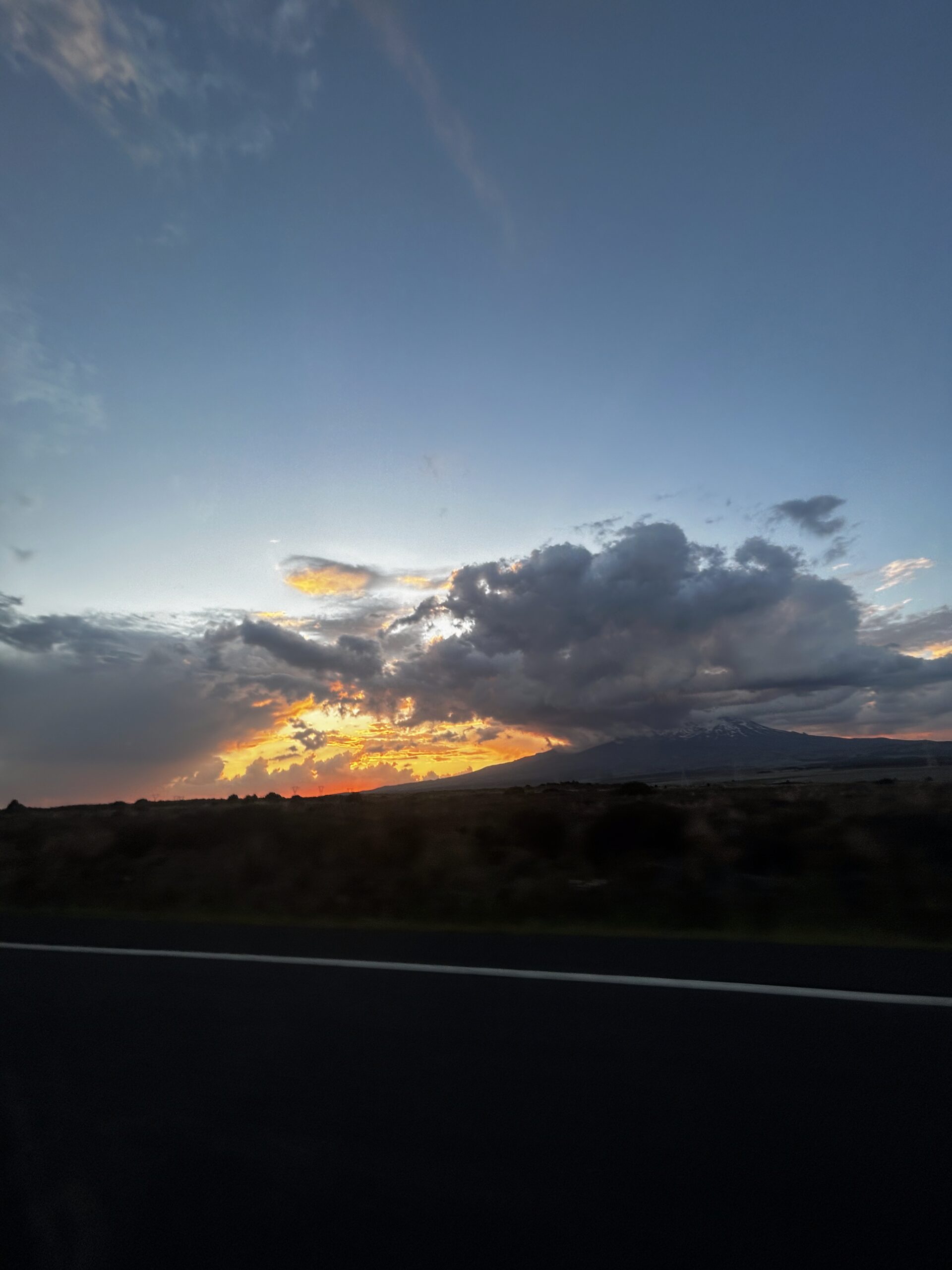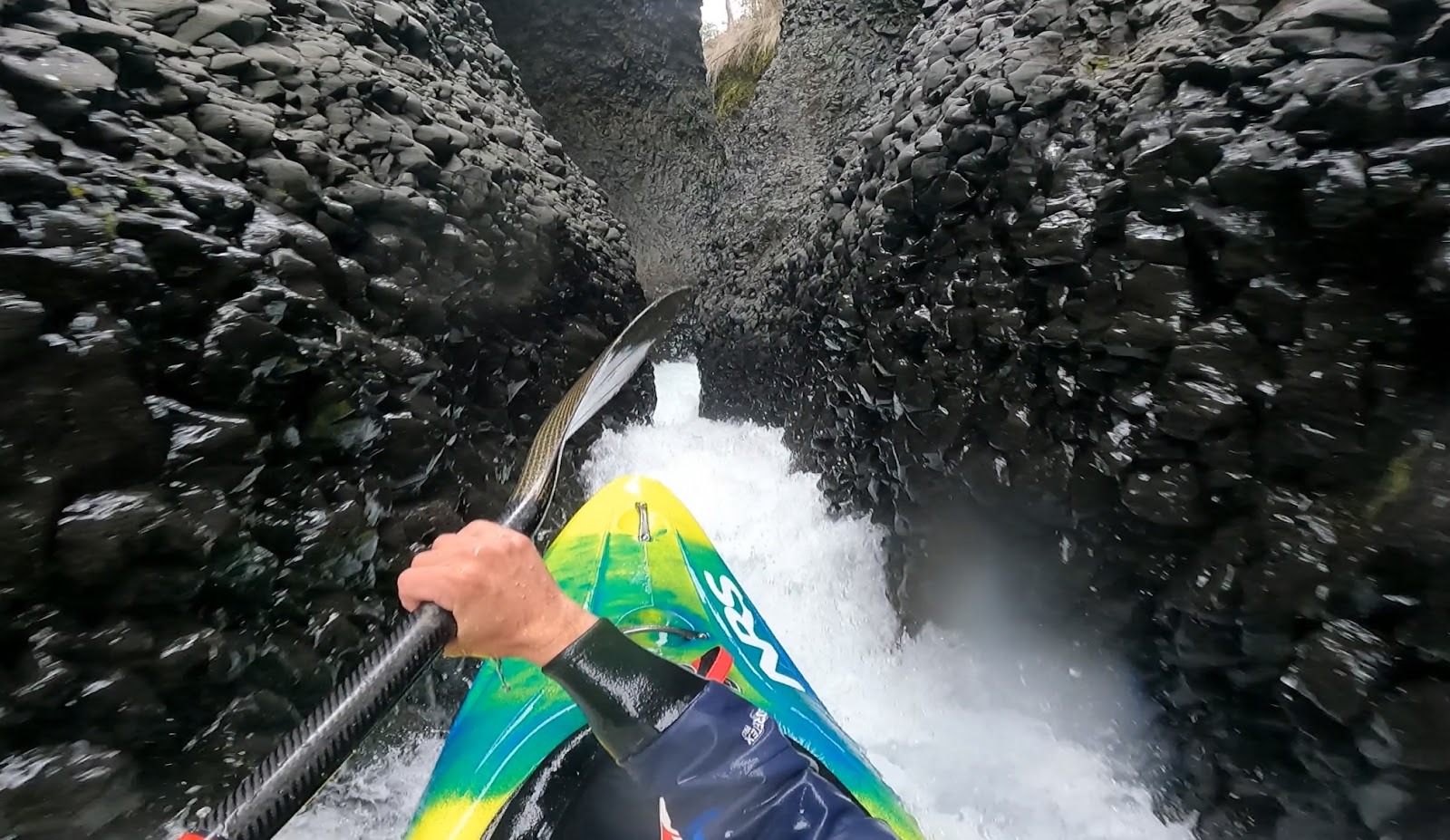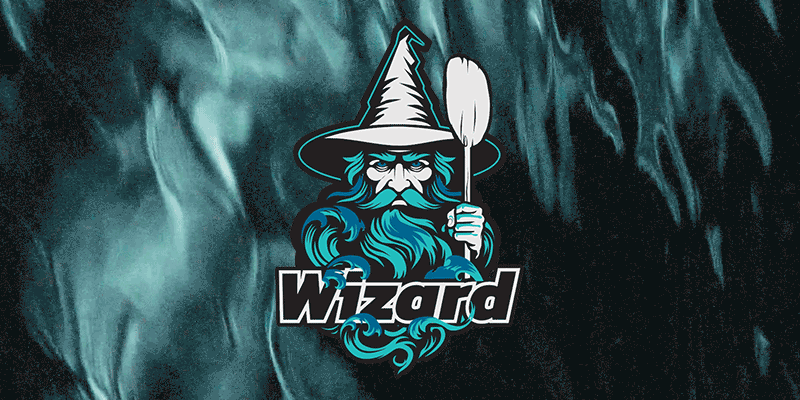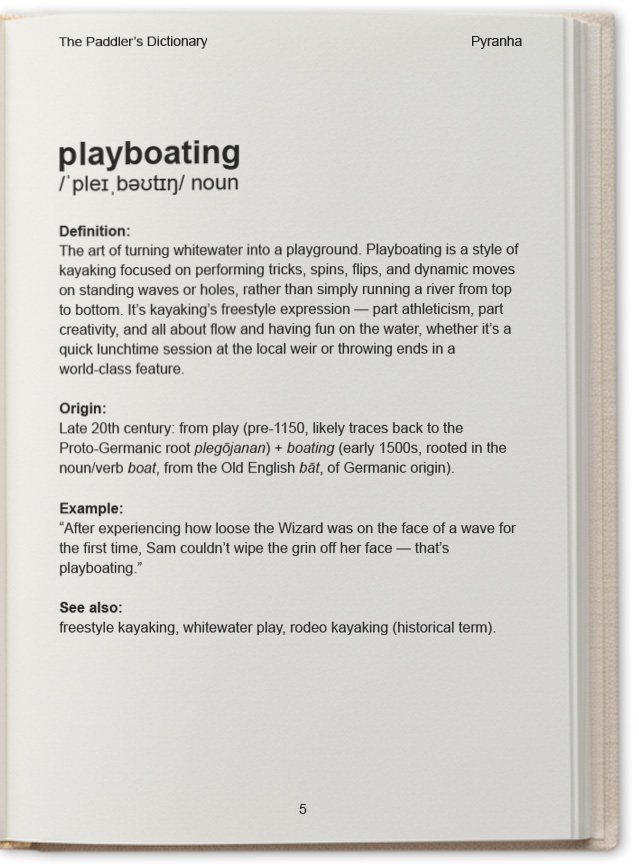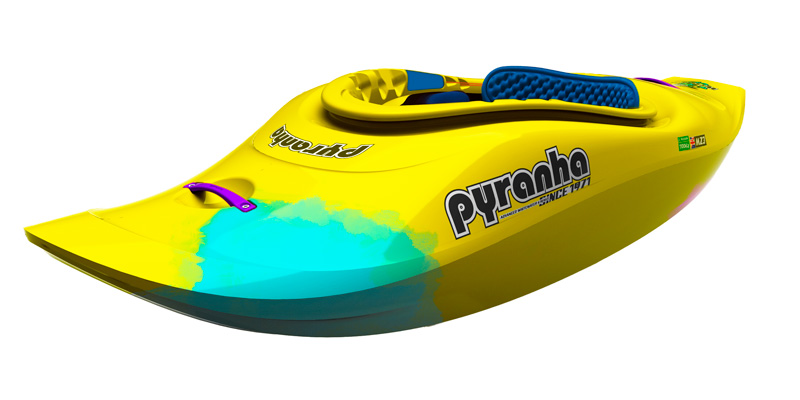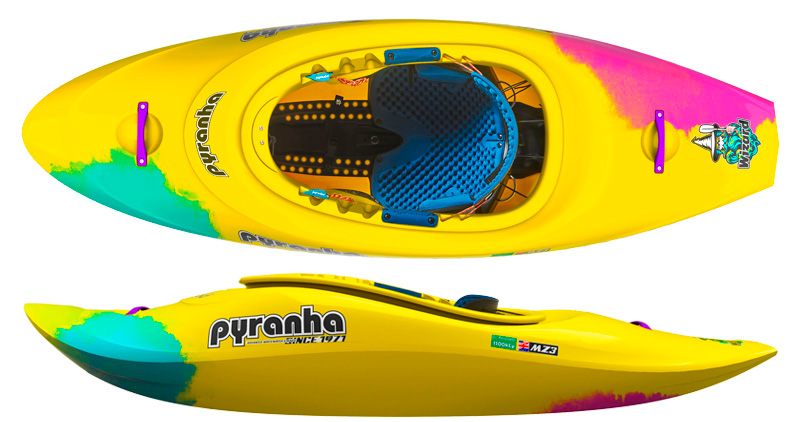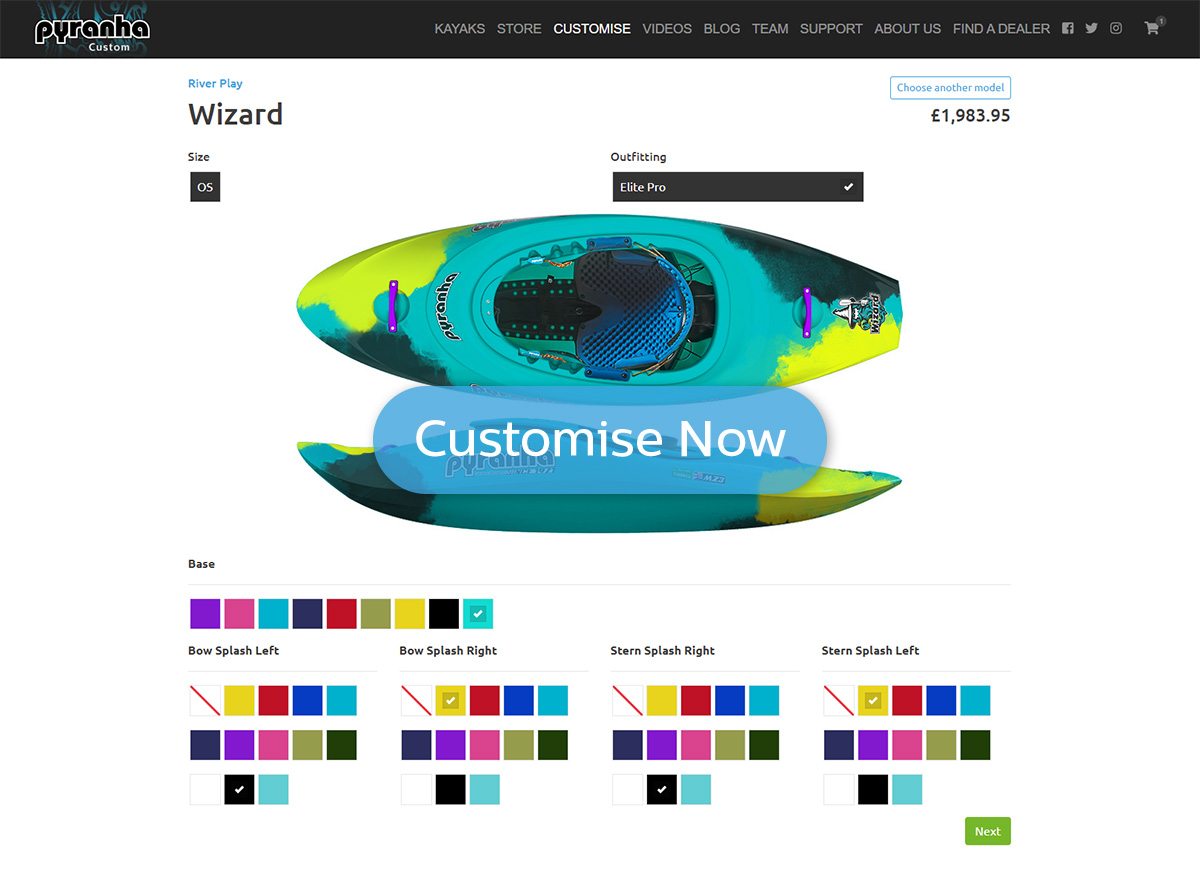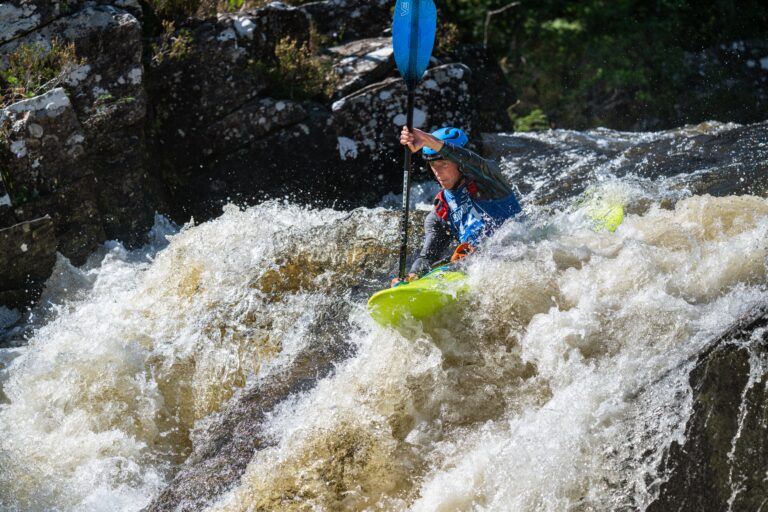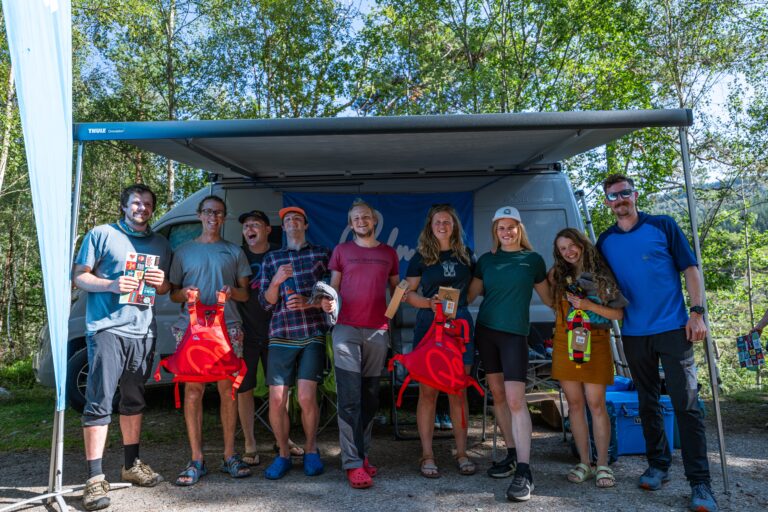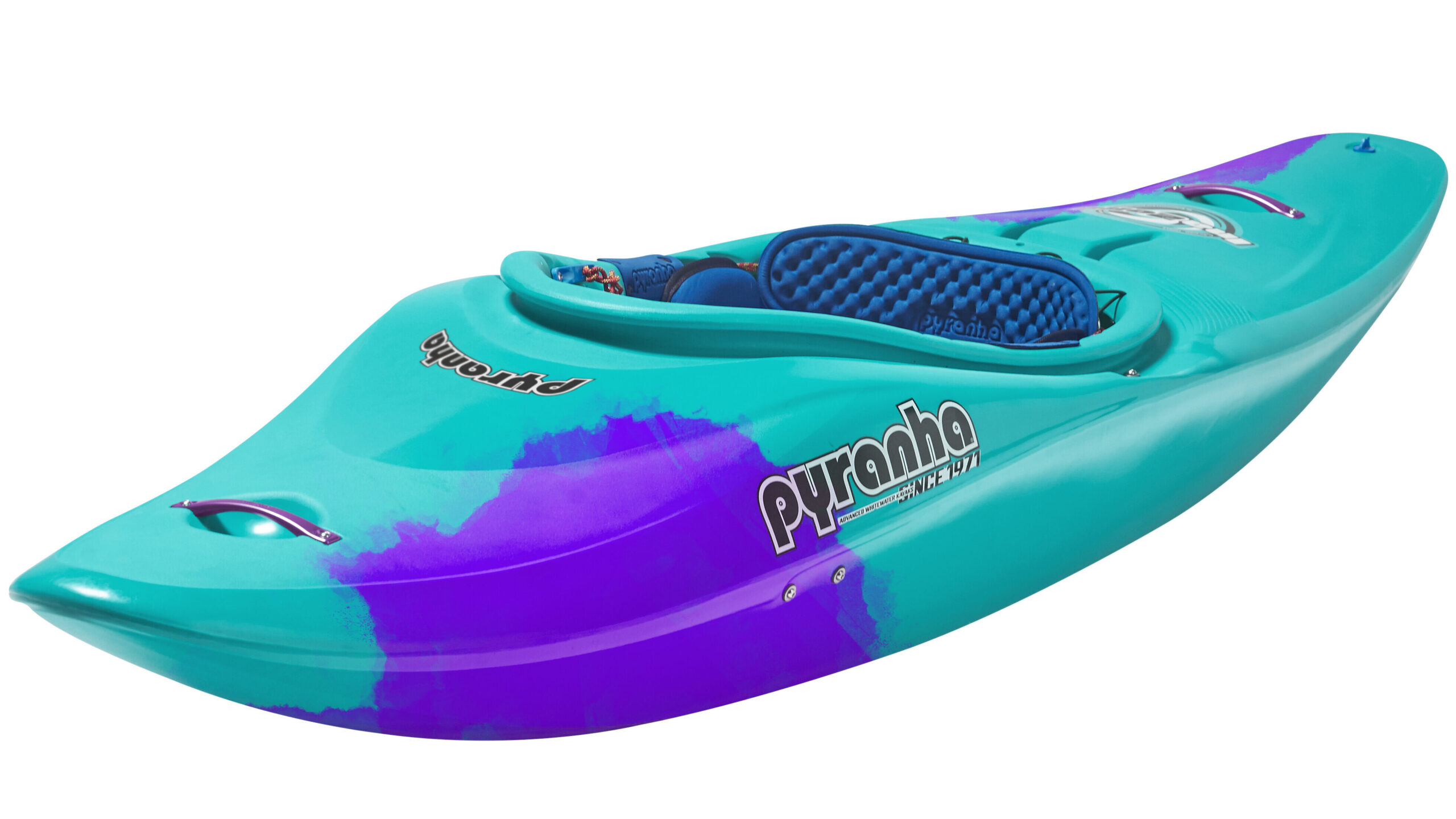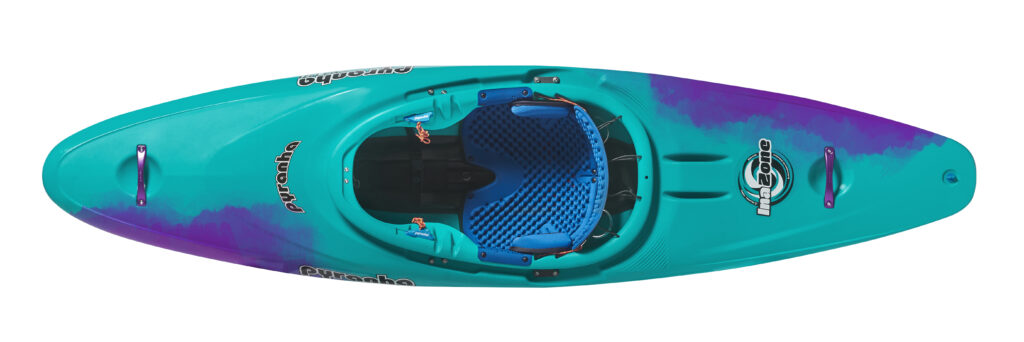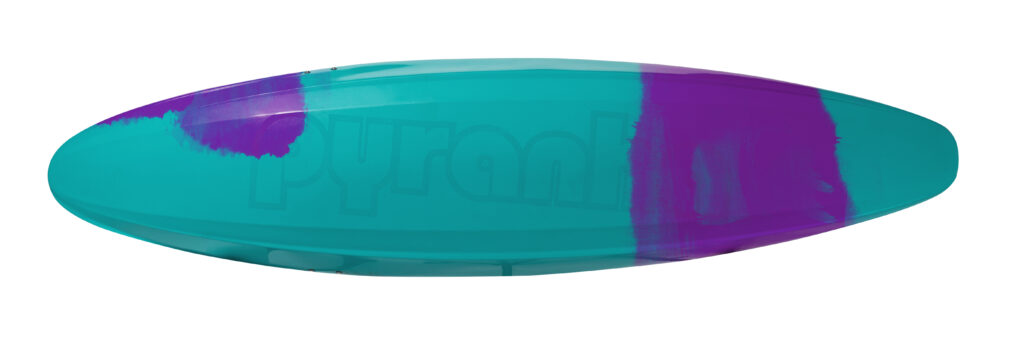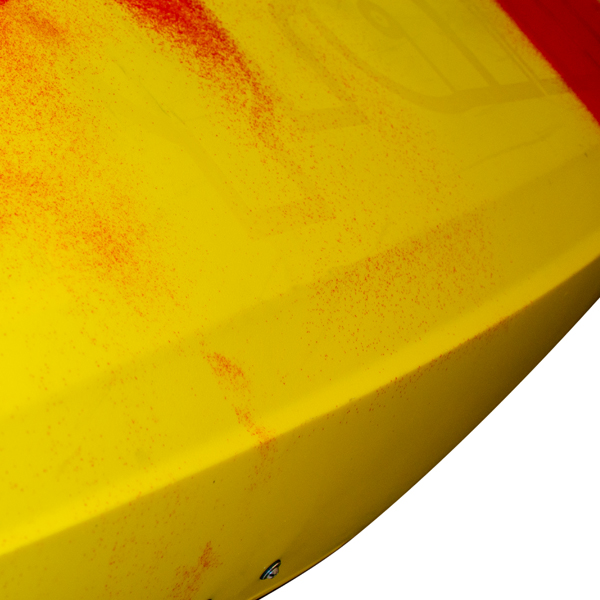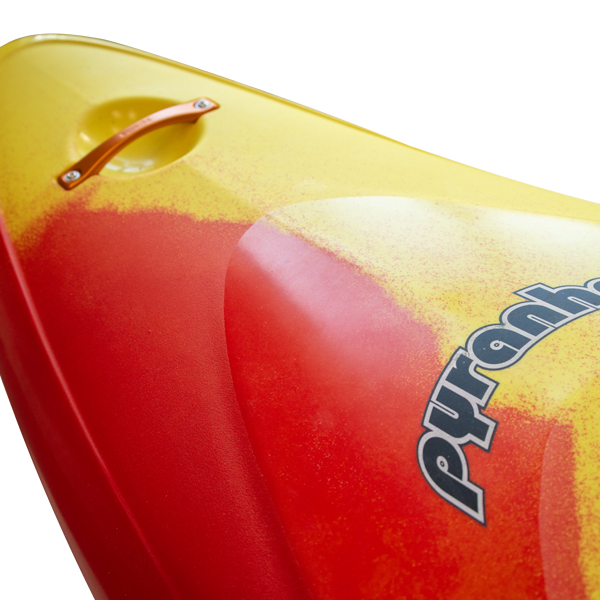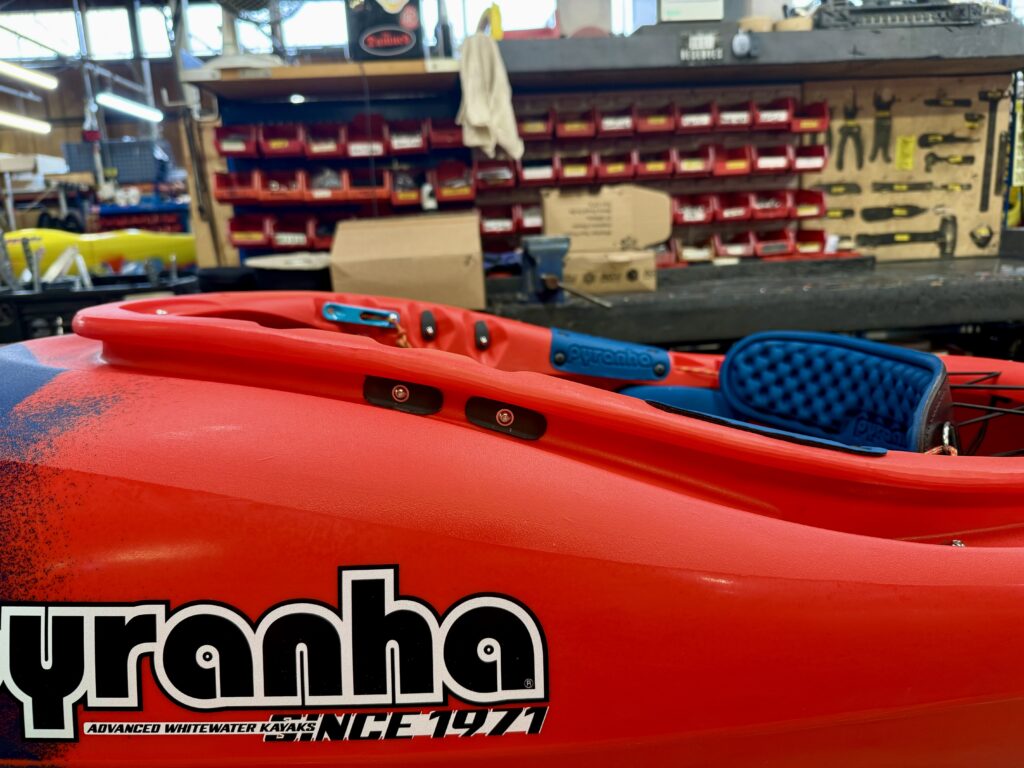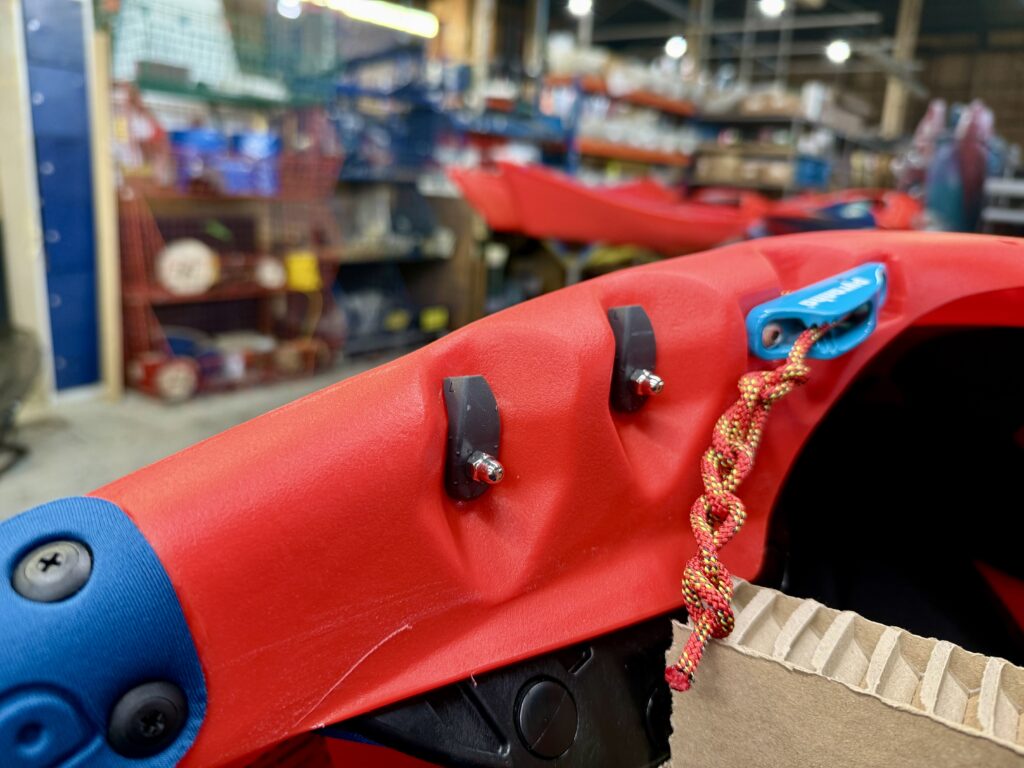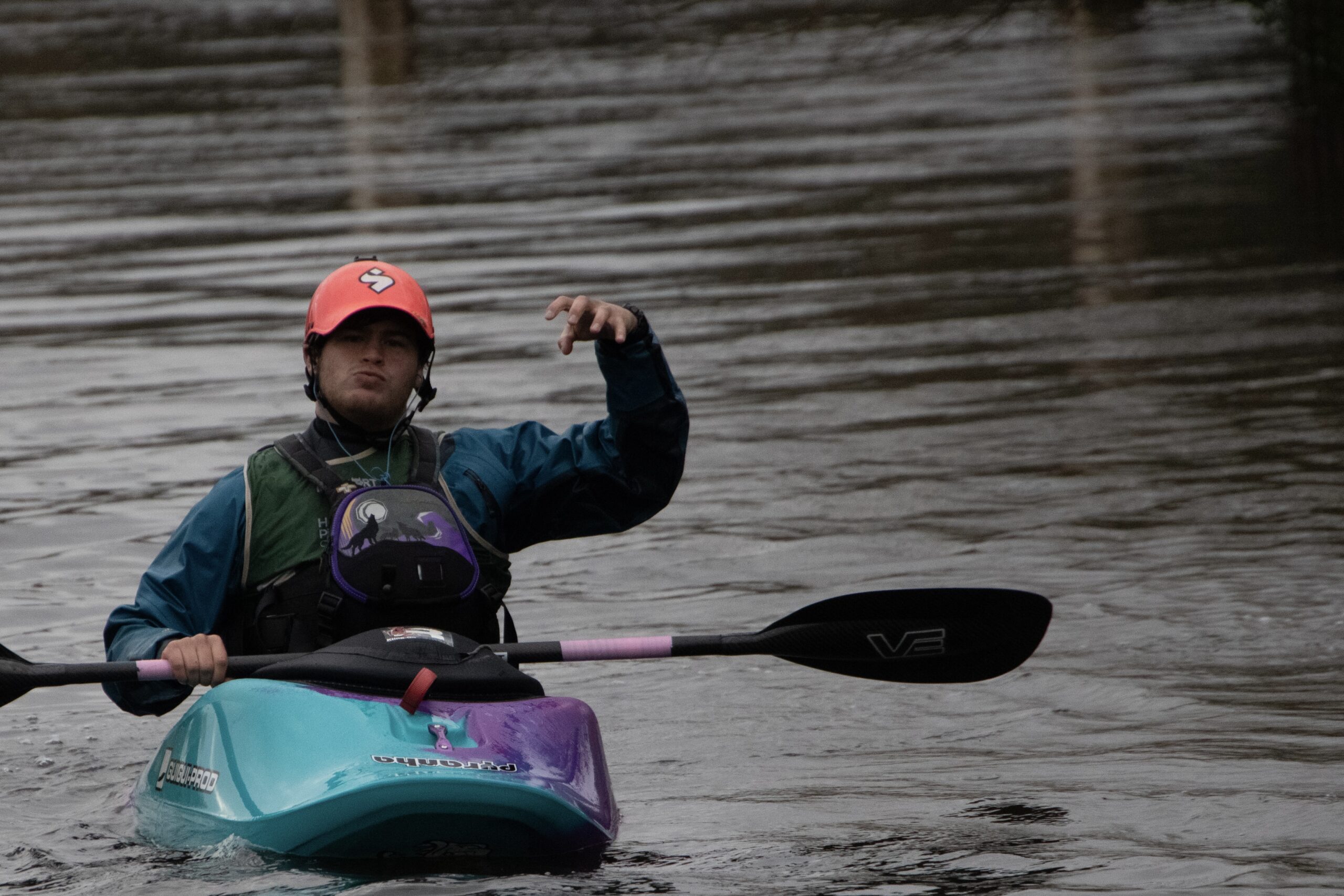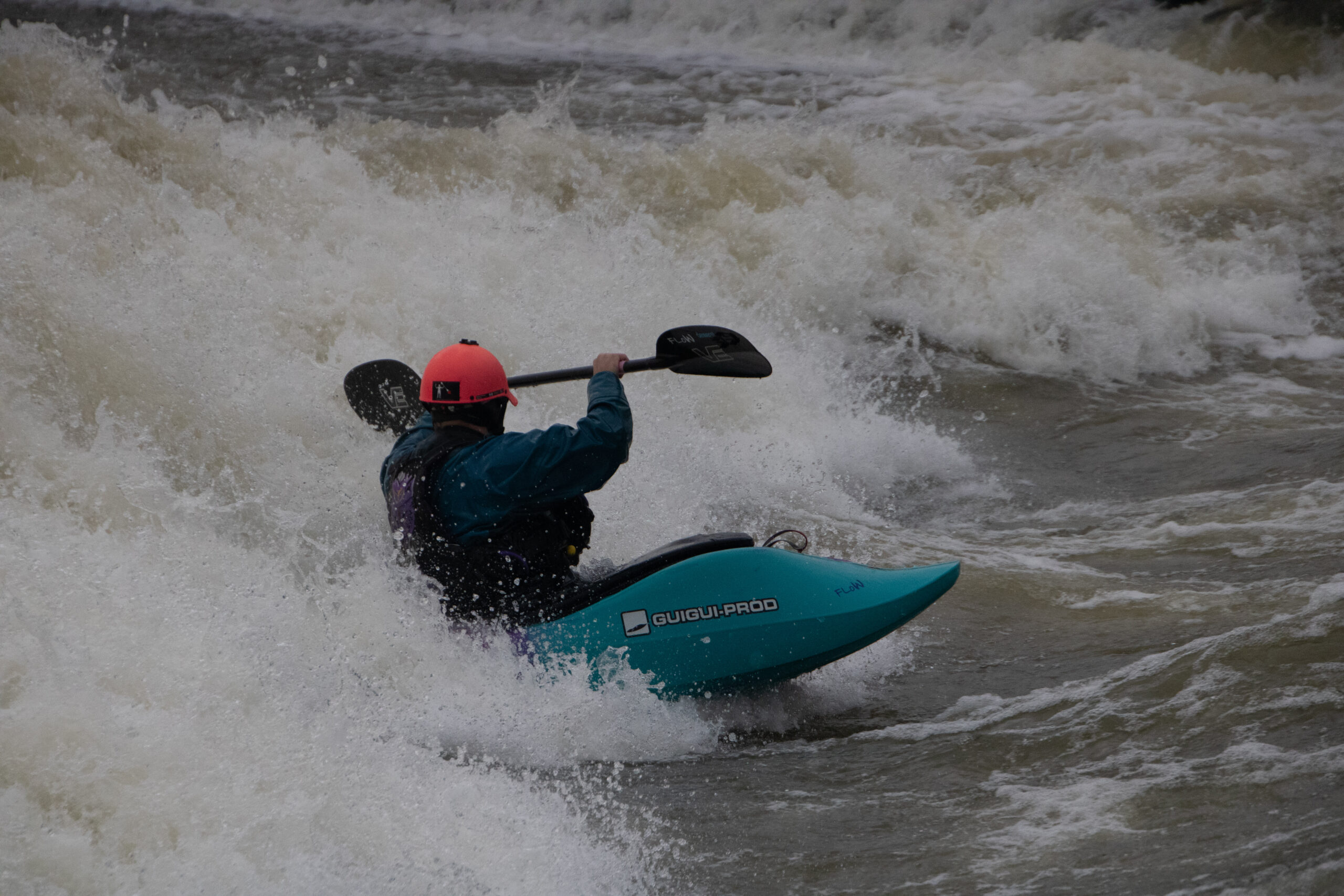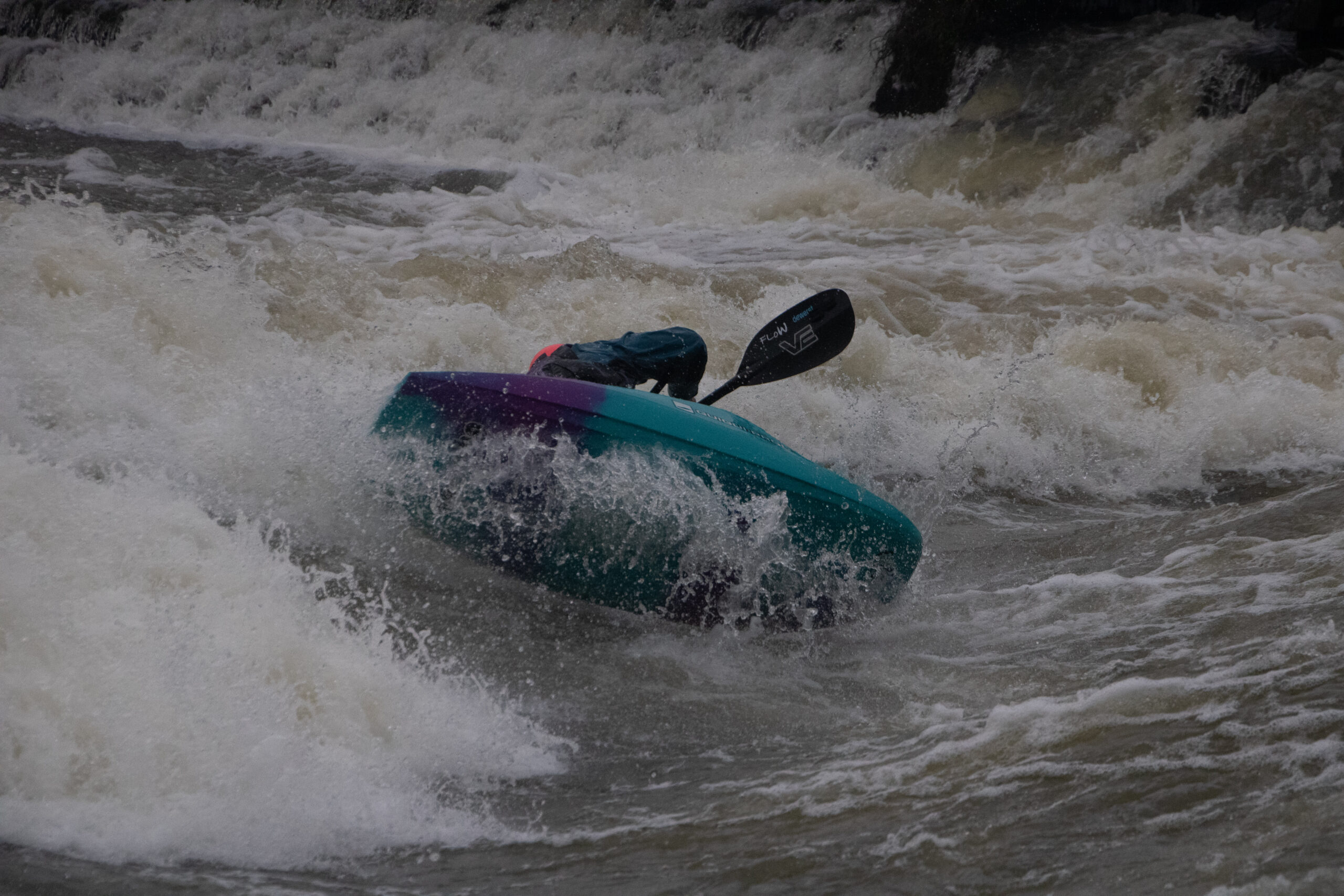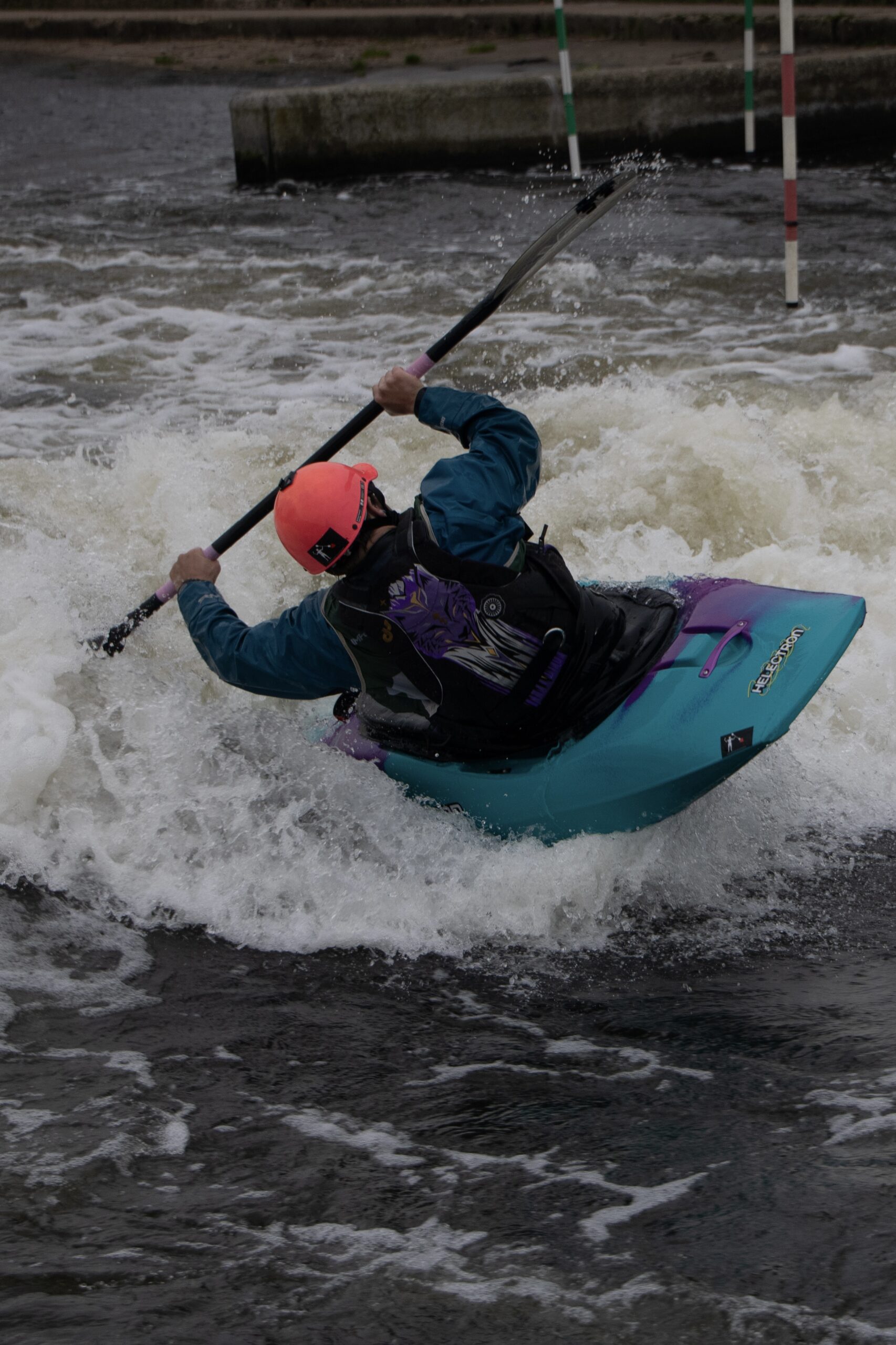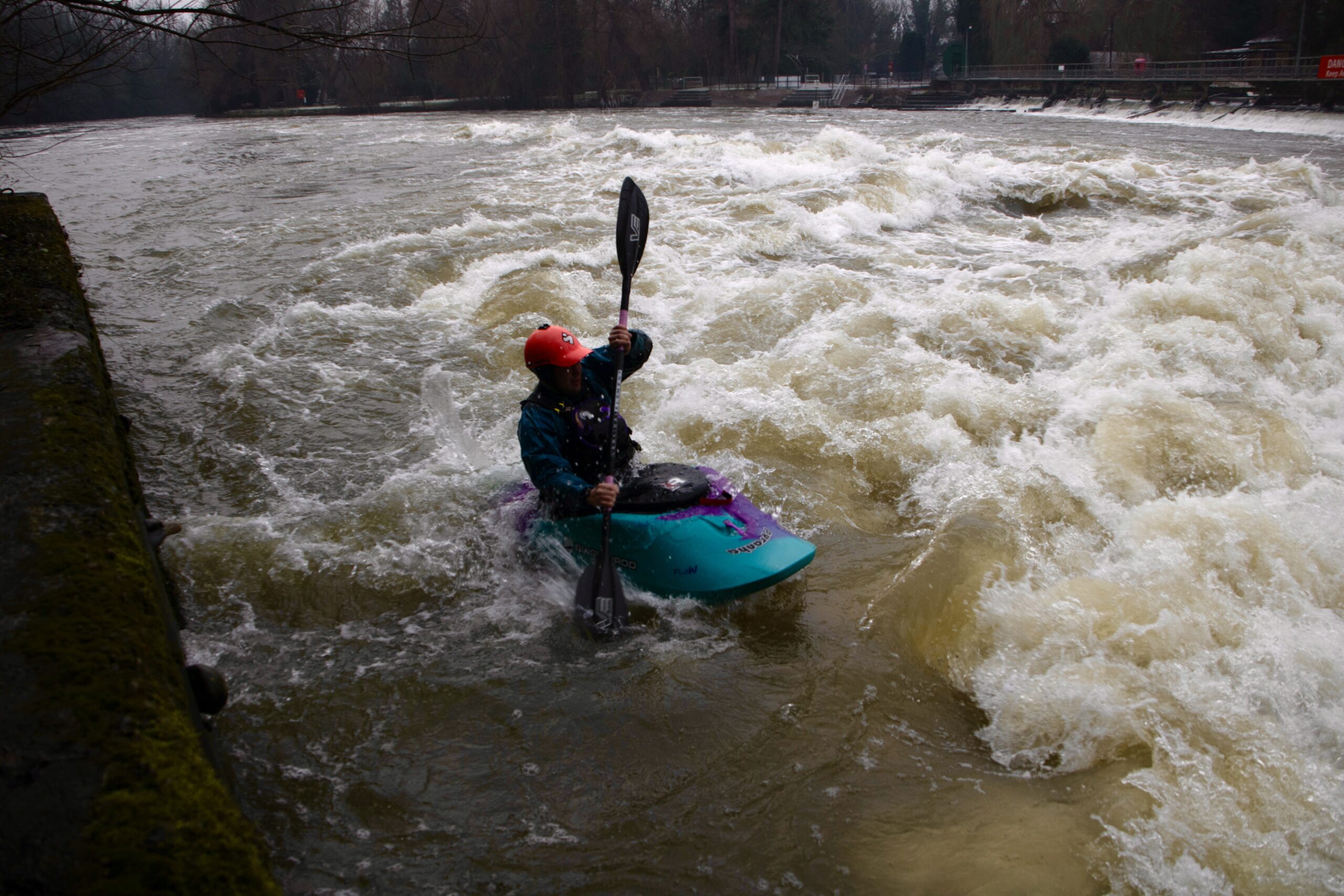I’m having to come to terms with the fact that I’m no longer young and wild and free. I’m still a kayak bum, but with responsibilities, mortgage, kids, and muscles which disappear if I don’t look after them!
I used to be able to work for a few months until I could afford a flight somewhere with great water, then live cheaply next to a river, hitching shuttles and spending weeks, even months a year paddling. Now I have to sneak in a quick flood run before breakfast, convince my partner it’s training, and sing nursery rhymes to young children while getting ready.
Don’t get me wrong, I love my family and the chaos of family life, but I dream of being carefree. It’s going to be a while before my kids can join me on trips, but the oldest has already been in a kayak a few times at the age of 3 and loves it, so there is hope of sharing the joys of boating in the future.
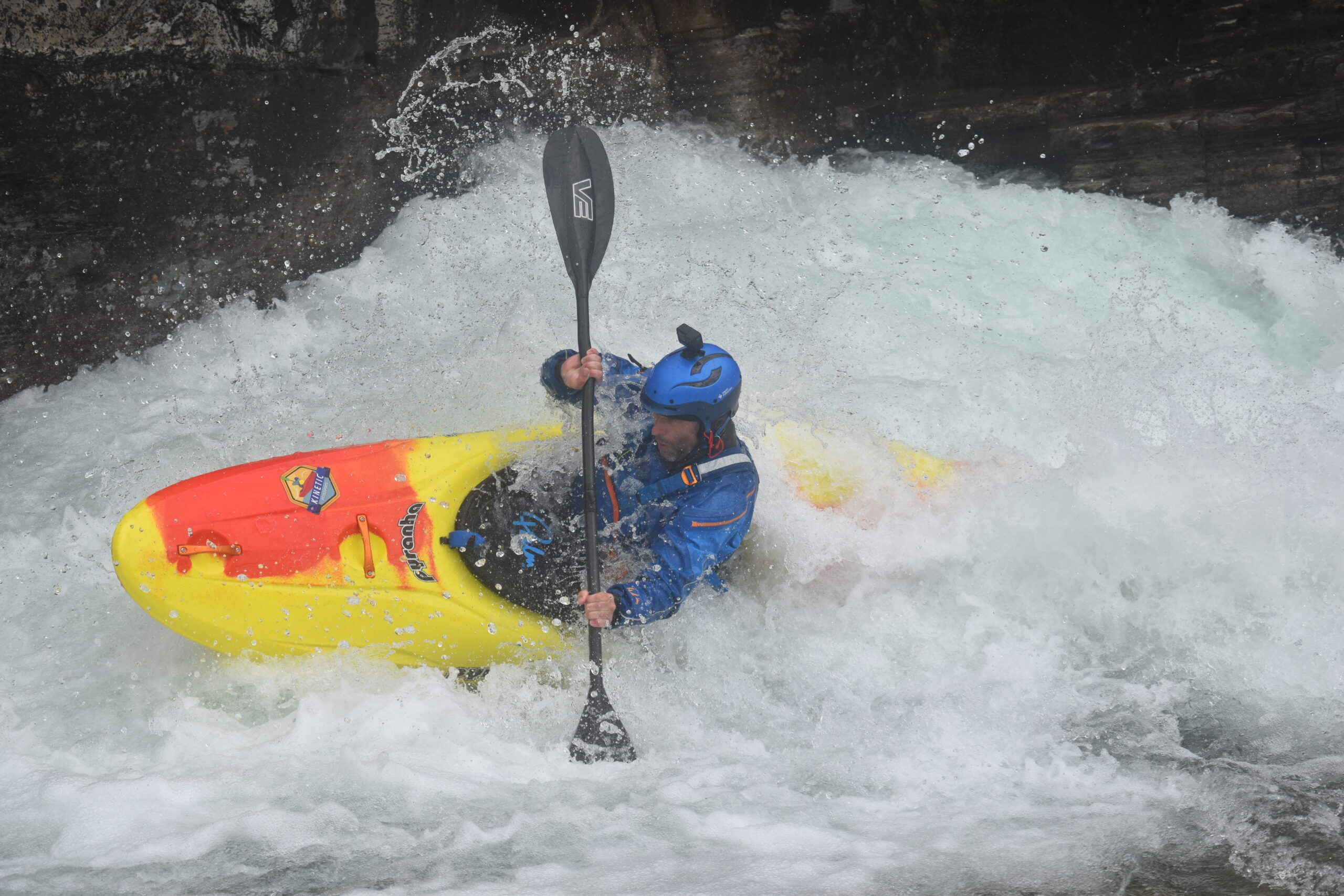
My wonderful partner suggested that I should organise a trip, albeit a short trip, somewhere with good boating, whilst she is still breastfeeding and can’t leave the kids. (Apparently, she will be cashing in the time with interest in the future). So I asked around some of the better boaters I know, who I would feel safe with, but still push some boundaries, and a plan formed for 3 of us to have a busman’s holiday. Chris (www.tametheelementcoaching.com), Dave (https://river-flair.com), and I would go to Norway and possibly meet up with (young) Alex (@notsolittlechild), who was working there.
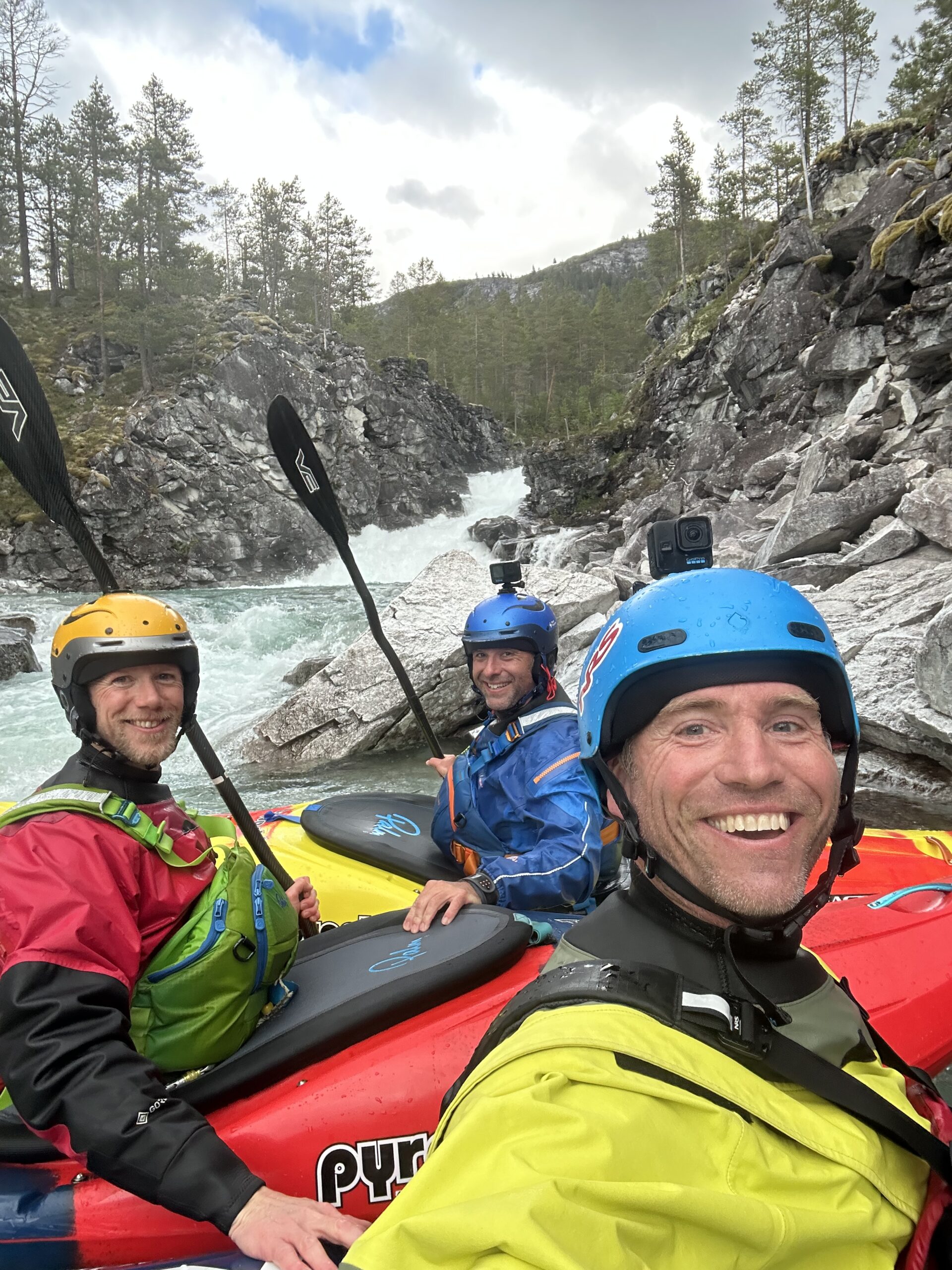
While I get more time in a boat than most, running Kinetic Paddlesports and living next to the River Kent, there’s always a difference between operating in your comfort zone coaching, and stretching it by paddling for yourself.
I was trying to get as much personal boating in as possible anyway, but this plan motivated me to grab any time in a boat, before work, or more likely before my partner has to go to work, and I have my days of childcare. A quick trip up to the Morriston for a day, to test out the new ReactR after a season mainly spent in my Ripper 2. I even started going to circuit classes to make sure I’m strong enough when I do get in a boat, which I never used to have to do. And skipping lunch when working on the lake just to practice some tailies and fall in.
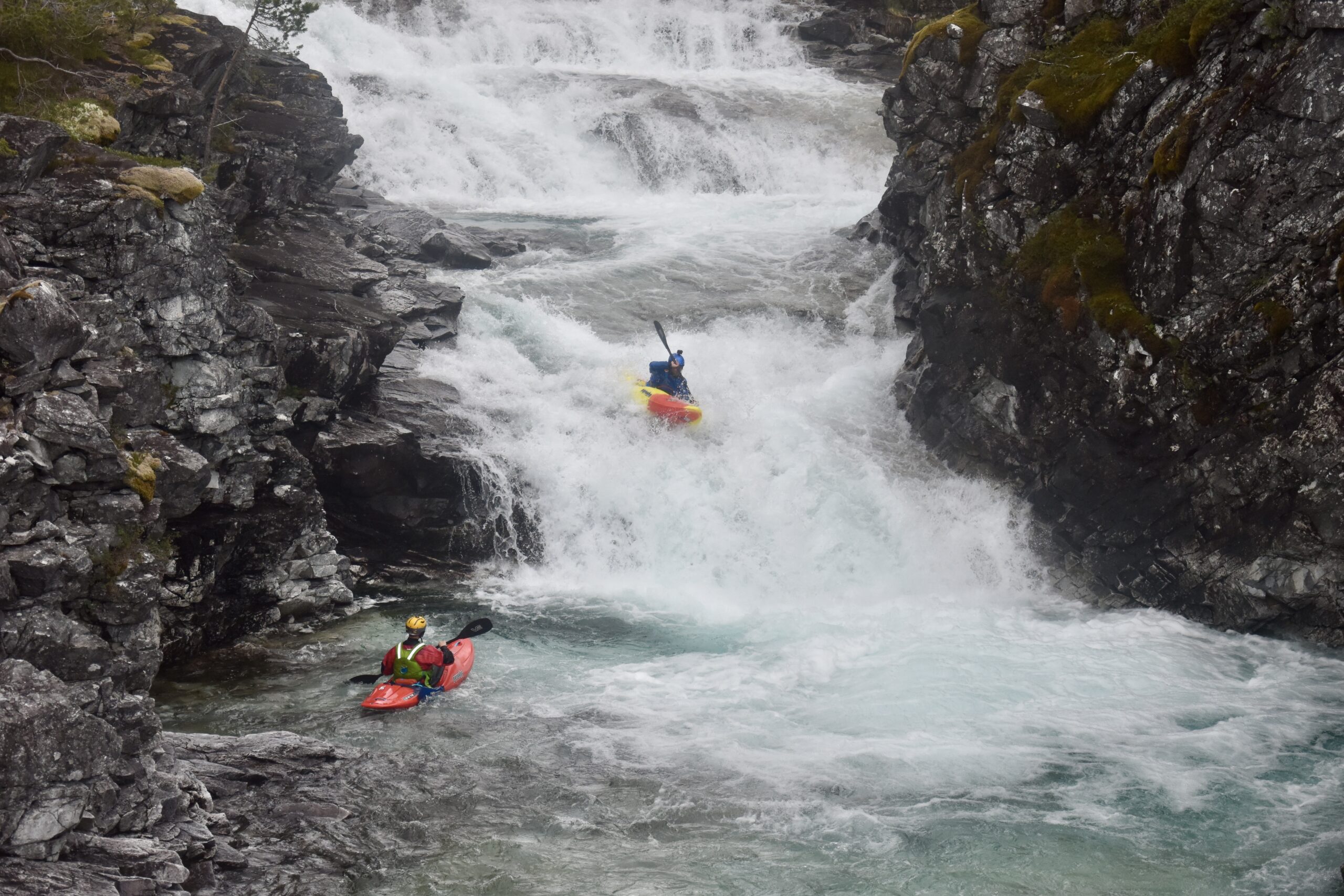
It’s safe to say I was nervous in the final few days before going because I have never had as little time for personal boating. My partner and I work on different days, so we can look after the kids, which leaves no spare time. However, I do have to remember that I have more experience, a deeper understanding of technique, and better river skills than ever before, and my benchmark for a good line is much higher, having critiqued photos and videos and coached others in the precision of paddling for over 20 years.
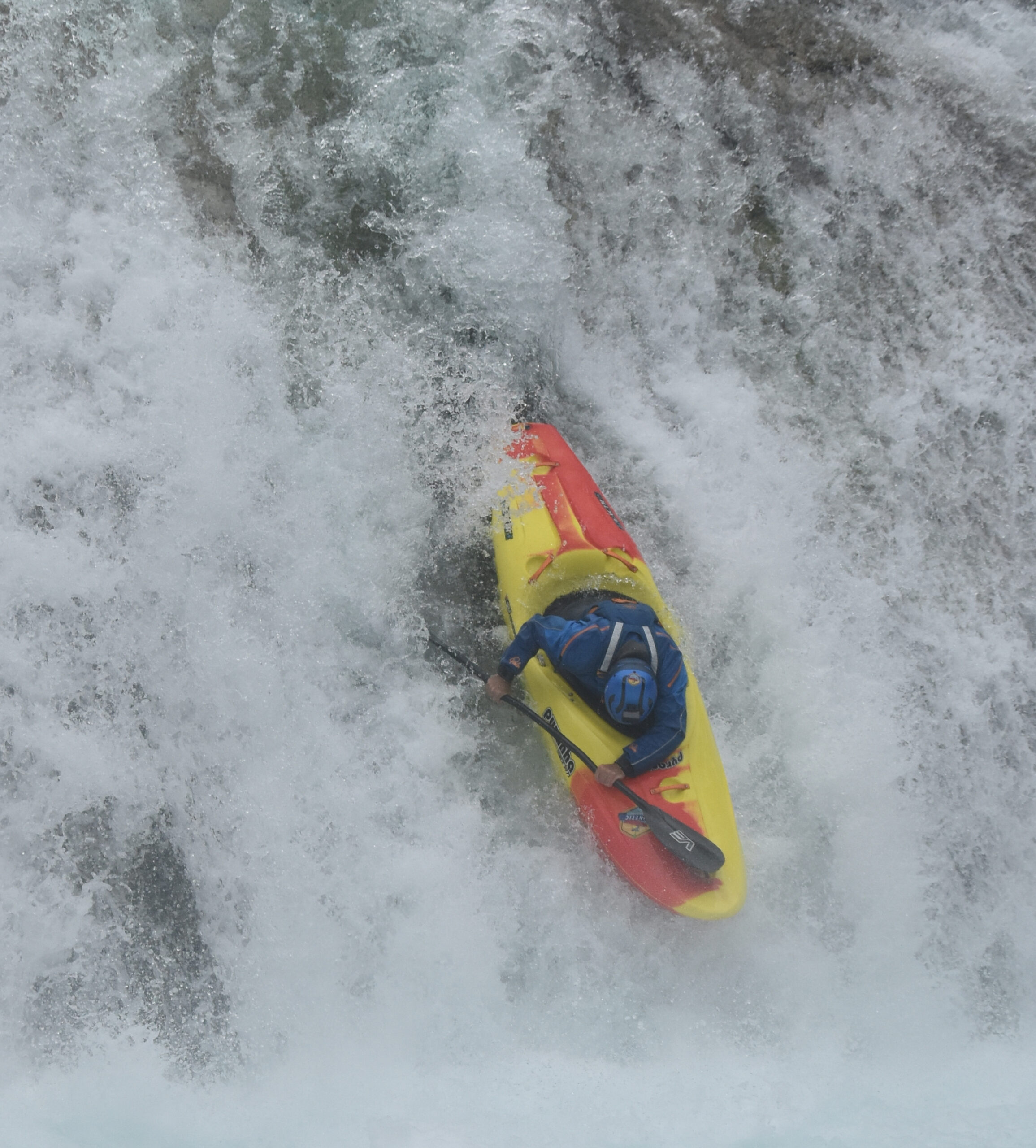
Boat design has also changed a lot since I was first in Norway. The creekboat of the time was the h2, and I remember doing some great blunts in the then-new S:6 on the Otra. This time round I was in the new ReactR which dwarfs the boats of my previous trips (which I thought were huge at the time) but it’s still easier to turn, adjust your line on and so much faster and predictable over aerated water when it gets steeper.
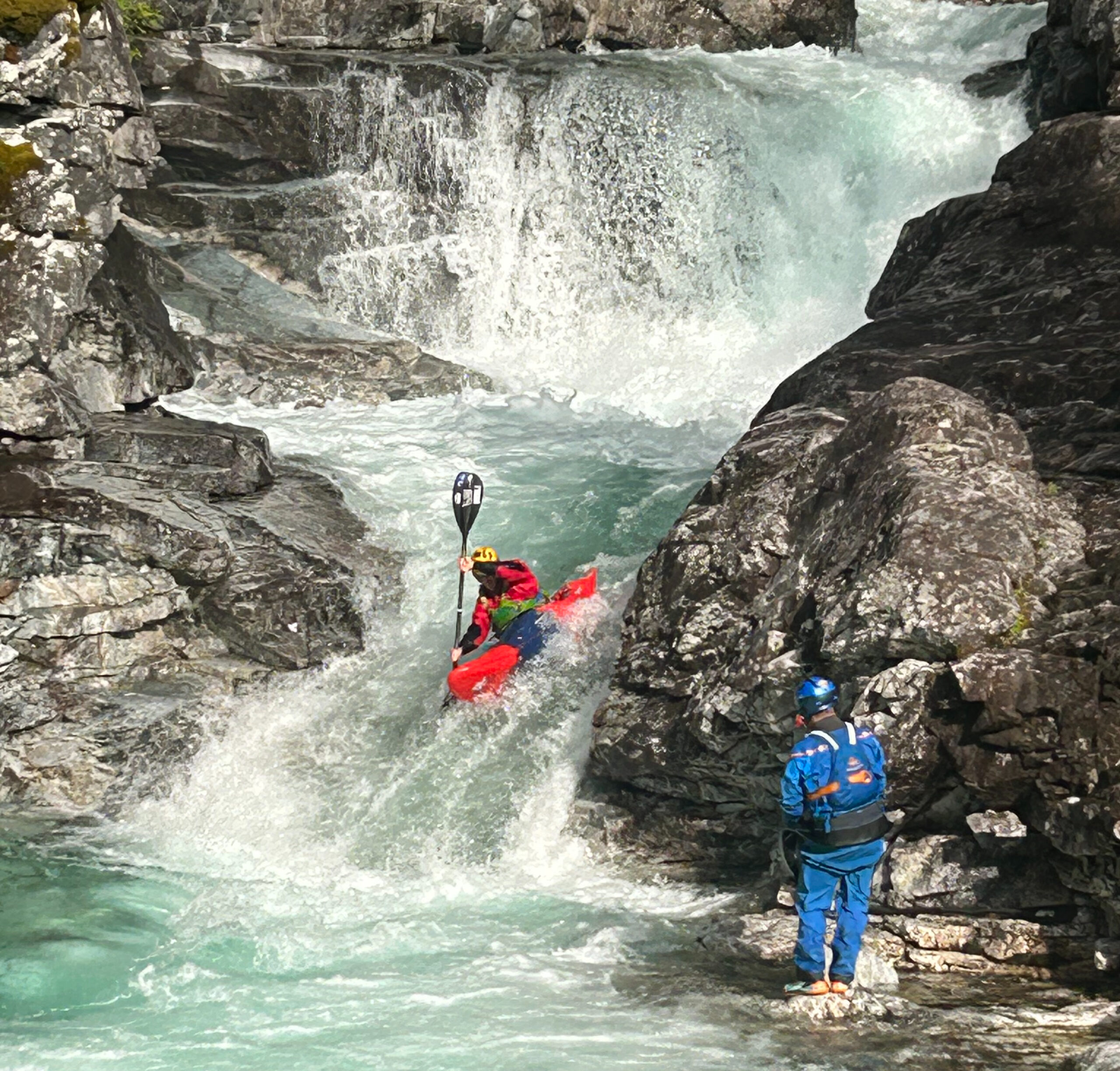
I’ll admit, I didn’t manage to run everything I hoped to; I’m not as slick or brave as I was when I came back from 2 months in Chile in my early thirties. But with a few extra decades of paddling under my belt, I was slicker, more confident and more precise than my last trips to Voss and Sjoa during a season of rafting in Southern Norway.
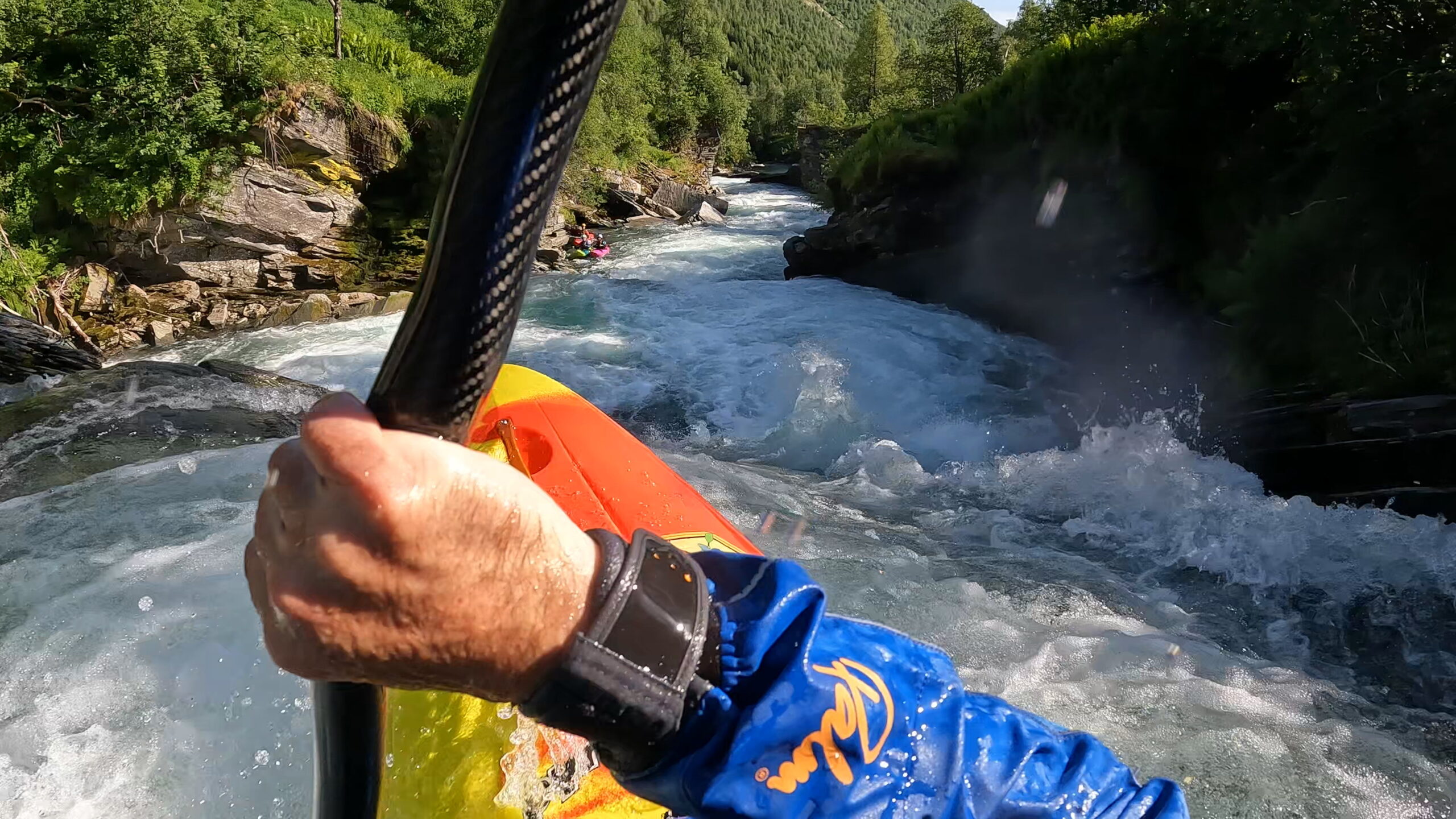
When I was in my twenties, I ran the upper Myrkdalselva and had a great day. Back then, I looked at the steeper lower section, with all its waterfalls, in awe; it was beyond even my wildest dreams. This trip I hoped I was better and could do a bit more, we paddled the upper then came back the next day with Alex after he had finished work and paddled ‘most’ of the Lower.
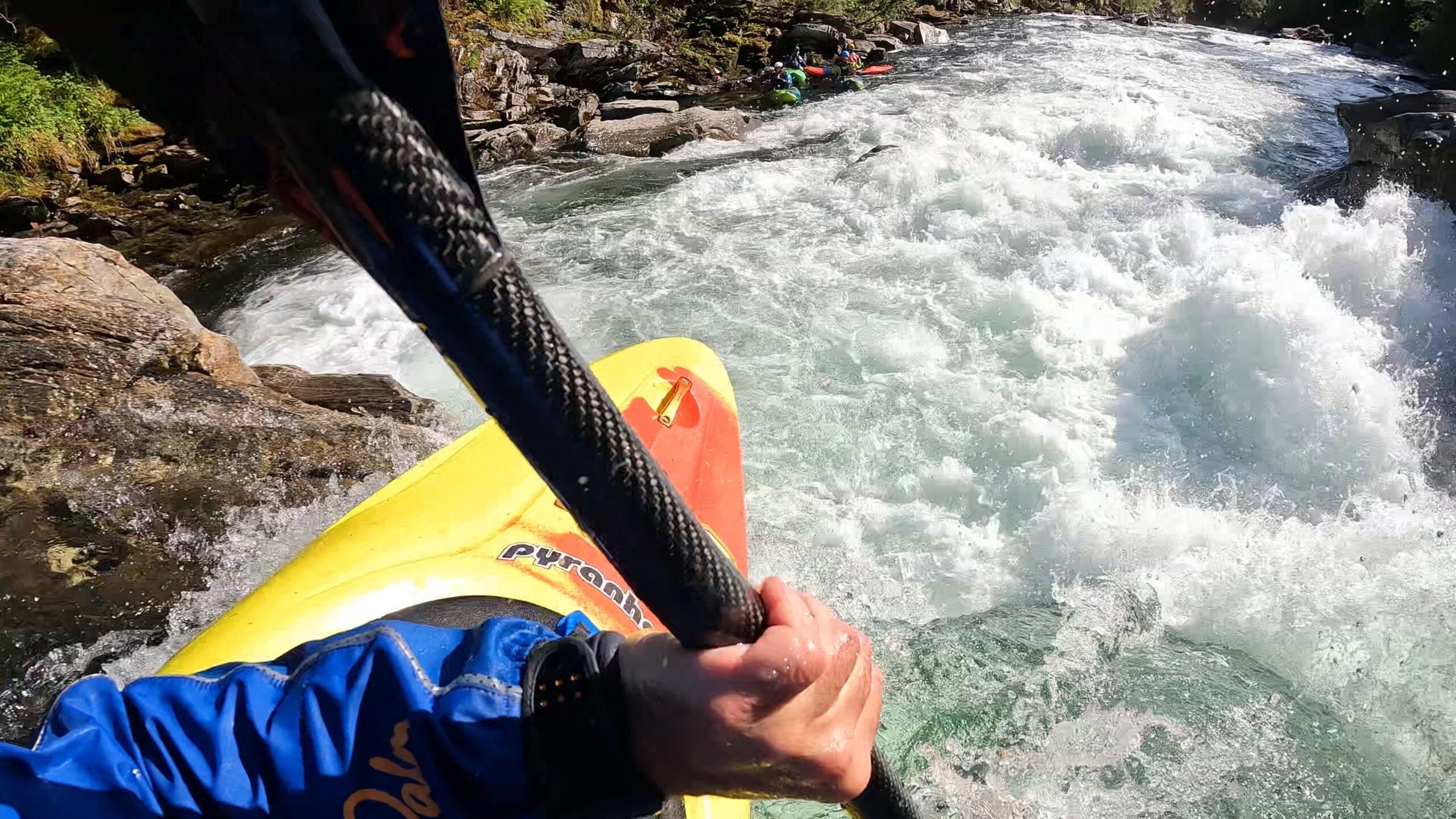
The Ula slides, in an alpine valley, was a bit high for a chilled day when we first looked at it, so only Dave was up for the main event, but returning with different expectations a week later and a bit more boating under our belts we had a great day on this unique playground.. Maybe time in a boat or more realistic expectations were the key, or maybe we just needed some time to get our heads into a better space.
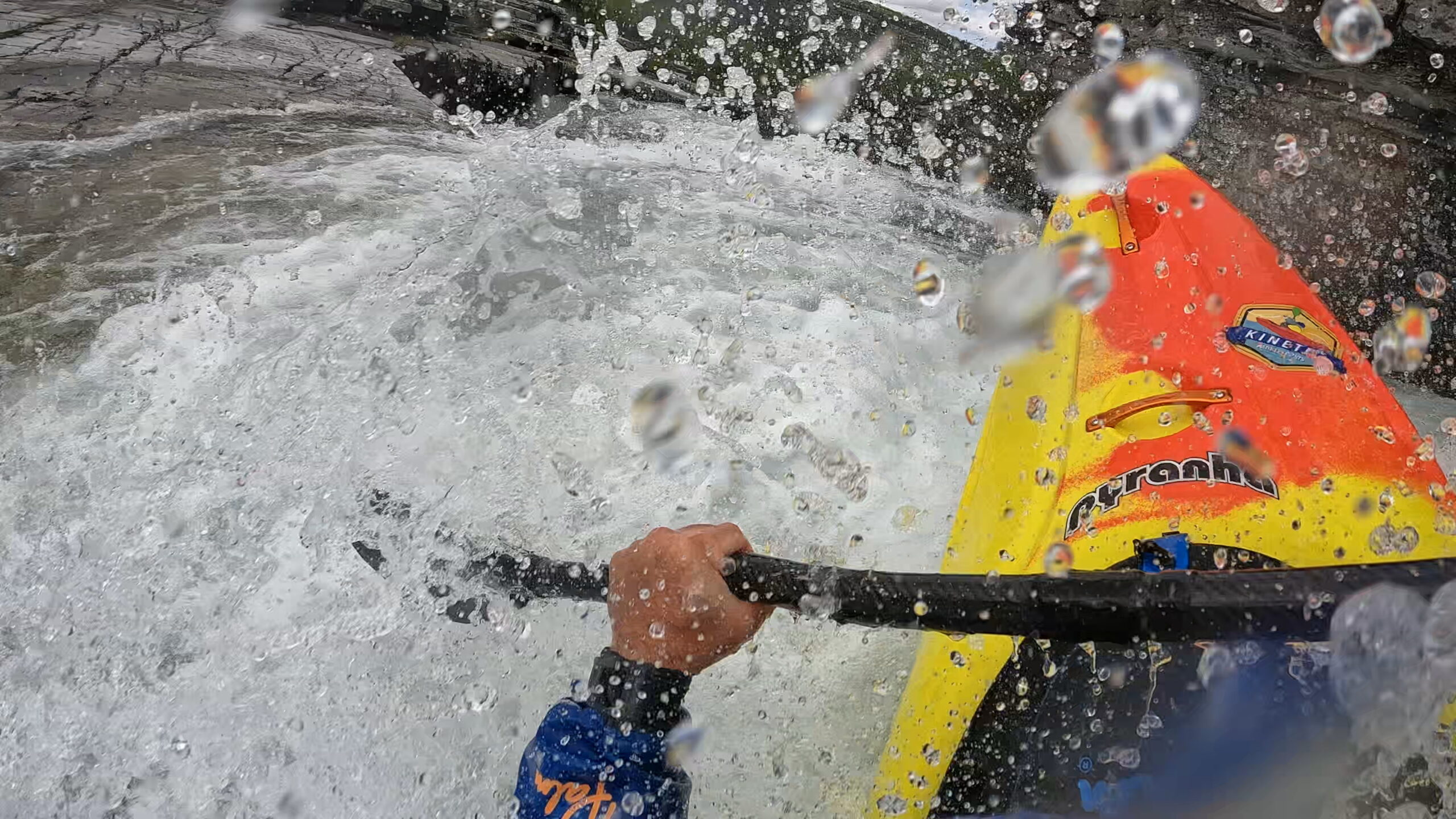
It was a great trip and great to have some back-to-back time on the river, from the low-volume, clear-water slides of the Brandset, to cruising on the Sjoa, it was just what I needed.
Being a dad is great, but hard, and a difficult adjustment to my lifestyle. For the first time, I missed home! Boating is still my happy place; it just takes a bit more effort to arrange, and trips take a different shape, but it’s all still possible and thoroughly enjoyable with fantastic friends and support.
I’m more motivated than ever to sneak in the time for a quick lap, learn a new trick and keep chasing the water as to what form that takes next, we’ll see.





